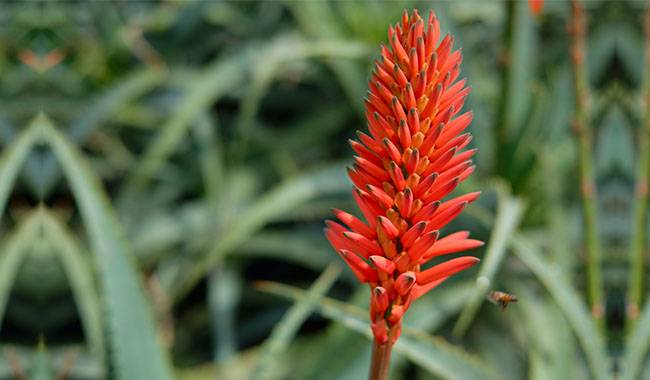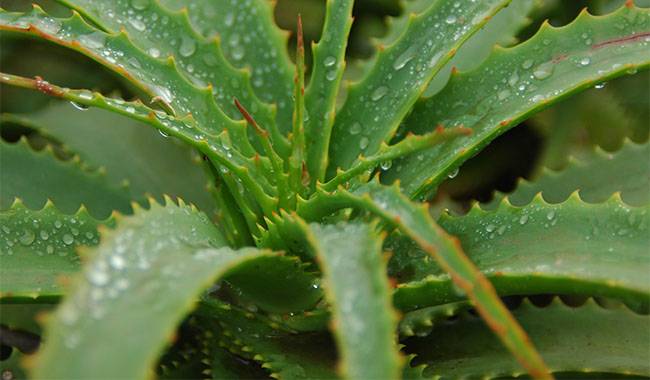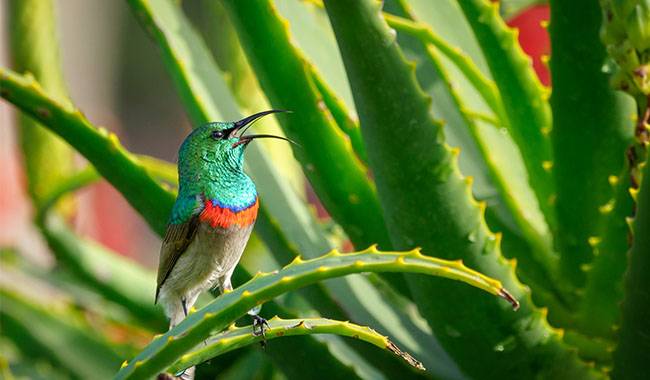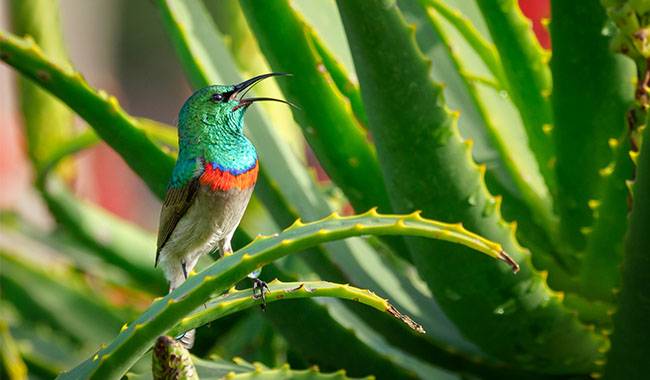
Many of us have aloe plants growing in our homes. This plant is appreciated mainly for the medicinal value of its fleshy leaves, few people know that this succulent plant is capable of flowering. It is a rare event – according to a popular saying – once in 100 years, which is why aloe vera is called a centenarian. Admittedly, aloe vera that has been properly cared for in an apartment or house will only live up to 20 years, but it is very realistic to achieve the beautiful flowering of this thorny species. You just need to give it the right conditions. You will learn how to do this in our article. You will learn How to Create the Best Conditions for Aloe Vera Bloom in the ThumbGarden article.
WHAT KIND OF ALOE VERA IS GROWING ON YOUR WINDOWSILL?
It is a moderately sized houseplant that can grow to 10 feet (3 meters) or more in the wild. In the vast lands of Africa, it resembles an exotic forest. And this succulent plant in the wild is often decorated with bright, long candle-like flowers in large red, pale yellow, or orange colors.
There are about 350 species of aloe vera, but not all of them are well-studied. Most people grow “just aloe” at home without trying to figure out its exact classification and name. In particular, many species are similar in appearance.
Aloe arborescent or Aloe vera is the most common houseplant. Both species are flowering, and their flowers differ in the length of their arrows, the color of their flowers, and the length of their period.
For lovers of the exotic, the intimidating Aloe ferox is common. The species is named for its orange-red, sharp spines. It has a ring of leaves on a strong trunk near the top. The flowering stems of this aloe vera have 5-12 bunches of fragrant flowers.
So how do you make aloe vera bloom? You have to work hard and create conditions close to nature.
WHEN CAN ALOE VERA BLOOM?
The plant is a succulent, unpretentious plant that can tolerate long periods of drought. It can be left unattended for 2-3 weeks when on vacation.
Under natural conditions, Aloe vera is exposed to significant temperature changes and undergoes periods of dormancy and enhanced activity. It is these changes that are lacking in pampered houseplants.
Most of the time, succulent pots are placed in a room that maintains a comfortable temperature of 68-77 °F (20-25°C) and water with other plants. Under these conditions, it will not bloom.
In order to stimulate the tendency to form flowering stems, you need to artificially create a dormant period, after which a new life cycle will begin. This is best done in winter.
In order to flower, the aloe must be more than five years old. Ideally, you should have a plant that is over ten years old. During the first three years of the succulent’s life, the leaves and roots are actively forming, so neither medicinal value nor flowers can be obtained from aloe vera during this period.
CREATING OPTIMAL FLOWERING CONDITIONS FOR ALOE VERA

Aloe vera needs its own room during the dormant period before flowering. It needs low temperatures, high dryness, and long daylight hours.
Temperature changes
In order to produce flowering stems, you must find a way to lower the dormant heat in the room (in winter) to 50-59 °F (10-15°C) or move the plant to another room. Only under these extreme conditions will the aloe’s tendency to flower and set seeds be awakened.
Lighting
The very short daylight hours in winter are not enough for tropical inhabitants. The plant needs at least 14-16 hours of light per day. The lighting of the plant should have no heating effect. Plant lamps are used for this purpose and there is a wide range of plant lamps available in stores.
They can be found on the shelves.
- LEDs.
- Fluorescent.
- Sodium.
- Induction light sources.
Watering mode
Aloe vera is native to hot countries with long periods of drought. The closest watering method is to water when the soil is completely dry. The pot should not be filled with water. Just leave the pot in the water dish for 10-15 minutes and then let the water runoff completely, leaving the soil slightly moist. This watering method will prevent root rot.
Stop watering aloe vera completely by lowering the room temperature during the winter dormancy period.
Long-awaited bloom
Keep the right conditions and you will have an arrow with flowers. Depending on the variety of aloe vera, it can be a single flower or form a dense cluster of flowers. The flowers will open like gladiolus, starting from the lower flowers and gradually progressing to the apex. The beauty of the flowers can be enjoyed for 3 to 6 months.
Once the flower stems emerge from the leaf axils, the room temperature should be gently raised for 2 to 3 days to 68-77 °F (20-25°C)-(or moved to a warmer room) and regular watering should resume.
To maintain plant strength during bloom, apply a potassium and phosphorus-based fertilizer for succulents.
Note: Fertilizer is for moist soil only and is best applied in liquid form, after watering.
The brighter the light, the richer the color of the aloe petals. For extra light, move the plant to the south or southeast. Aloe vera is not afraid to change its habitat.
HOW DO I CARE FOR MY ALOE VERA AFTER IT BLOOMS?

Once the last bud has wilted, remove the stem with a sharp knife or shears and disinfect with alcohol, furacilin, or manganese solution. Cover the cut with wood ash. Maintain the same watering regime as before and fertilize with a nitrogen fertilizer after 1-2 weeks to encourage regeneration and active growth of the green mass.
If the flower has been recently transplanted into new potting soil and has not exhausted its reserves, make additional fertilization after flowering, with a small or no amount.
Dear readers, you may have seen aloe vera flowers in your home more than once. Please share your experience in the comments of the article.




